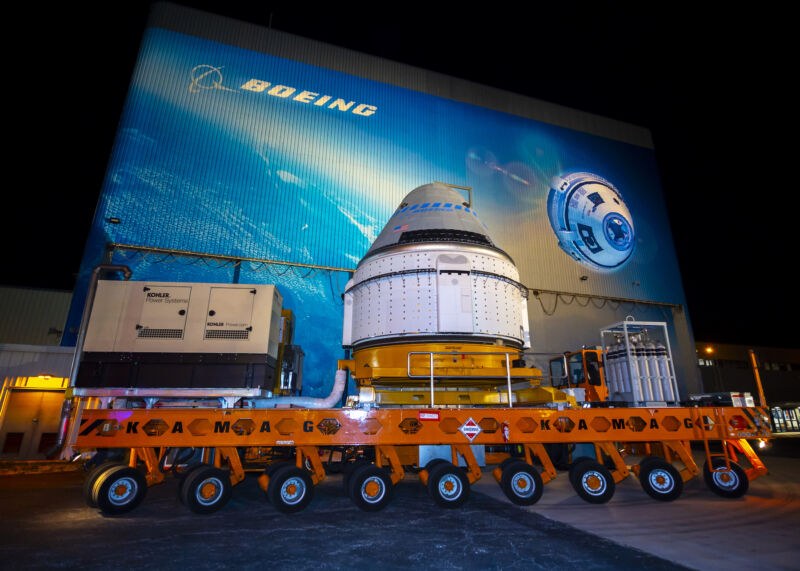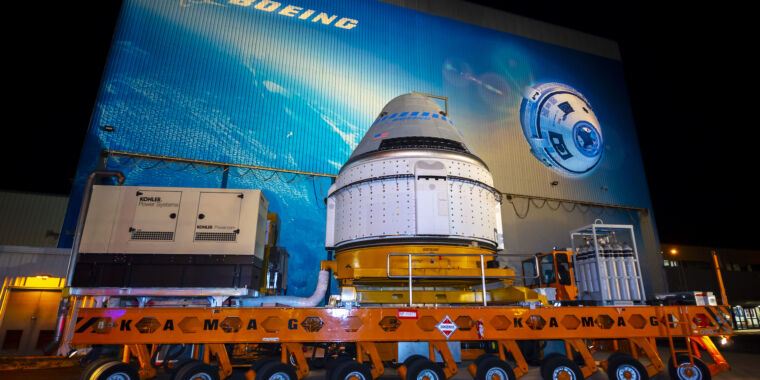
Boeing on Wednesday announced a new financial charge for its troubled Starliner commercial crew program, bringing the company's total loss on Starliner to $1.6 billion.
Boeing posted a $125 million loss on the Starliner program in its quarterly report, blaming delays to the spacecraft's ongoing Crew Flight Test, the program's first mission to put astronauts into orbit. This isn't the first time Boeing has reported a financial loss on Starliner. Including the new charges announced Wednesday, Boeing has now lost nearly $1.6 billion in total on the program since 2016.
These losses have generally been caused by schedule delays and extra work to fix problems on Starliner. When NASA awarded Boeing a $4.2 billion contract to complete development of the Starliner spacecraft a decade ago, the aerospace contractor predicted the capsule would be ready to carry astronauts by late 2017.
It turns out that the Crew Flight Test did not start until June 5, 2024.
In a separate announcement Wednesday, Boeing named Kelly Ortberg as CEO of the company, effective Aug. 8. He replaces Dave Calhoun, whose tenure as Boeing CEO was marred by scandals involving the 737 MAX passenger jet. Ortberg was previously CEO of Rockwell Collins, now Collins Aerospace, a major supplier of avionics and other components to the aerospace industry.
Boeing is on the hook
When NASA selected Boeing and SpaceX to develop the Starliner and Crew Dragon spacecraft for astronaut missions, the agency signed fixed-price agreements with each contractor. These fixed-price contracts mean that the contractors, not the government, are responsible for paying for any cost overruns.
So with each Starliner delay since 2016, Boeing's financial statements have recorded new losses. It will be Boeing's burden to pay for fixes for problems discovered during the Starliner's ongoing crew test flight. That's why Boeing warned investors Wednesday that it could lose more money on the Starliner program in the months and years ahead.
“There remains a risk that we will incur additional losses in future periods,” Boeing wrote in an SEC filing.
Taking into account the financial loss announced Wednesday, NASA and Boeing have committed at least $6.7 billion to the Starliner program since 2010, including costs for spacecraft development, testing and government payment for six operational Starliner crew flights.
It’s instructive to compare these costs to those of SpaceX’s Crew Dragon program, which began flying astronauts in 2020. All of NASA’s contracts with SpaceX for a similar scope of work on the Crew Dragon program totaled more than $3.1 billion, but any costs paid by SpaceX are unknown because it is a private company.
SpaceX has completed all six of its original crew flights for NASA, while Boeing is at least a year away from starting operational service with Starliner. In light of Boeing’s delays, NASA has extended SpaceX’s commercial crew contract to cover eight additional return flights to the space station through the end of 2020.
Boeing executives have blamed the fixed-price contract structure for losses on the Starliner program. The aerospace giant has similar fixed-price contracts with the Pentagon to develop two new Air Force One presidential transports, Air Force tanker planes, refueling drones and training aircraft. Boeing has also reported losses on those programs.
SpaceX, meanwhile, excelled at fixed-price contracts, which NASA is using for various elements of its Artemis program, which aims to land astronauts on the moon. For example, NASA selected SpaceX and Jeff Bezos’s space company Blue Origin for fixed-price contracts to develop human-capable lunar landers. SpaceX also won a fixed-price contract to provide NASA with a spacecraft to deorbit the International Space Station at the end of its life.
Time for a decision
The first crew mission aboard Boeing's Starliner spacecraft is expected to conclude sometime in August with the return of NASA astronauts Butch Wilmore and Suni Williams from the International Space Station. A successful completion of the test flight would clear the way for Boeing to begin launching its backlog of six operational crew missions to the space station.
But it wasn’t that simple. The Starliner test flight was originally scheduled to remain at the space station for at least eight days. Before the June launch, NASA and Boeing officials left open the possibility of a mission extension, but managers didn’t expect Starliner to still be attached to the station more than 50 days later.
Mission managers ordered Starliner to remain at the station for the rest of June and July while engineers investigated problems with the spacecraft's propulsion system. Starliner's service module suffered helium leaks, and the spacecraft's small maneuvering engines overheated during its final approach to dock with the station.
NASA, which oversees Boeing's commercial crew contract, is nearly ready to release Starliner for return to Earth, possibly as early as next week. On Saturday, ground controllers ordered Starliner to test its maneuvering engines, and 27 of its 28 jets appeared to be functioning normally despite overheating earlier in the mission. Despite the leaks, the spacecraft also has enough helium to pressurize its propulsion system, NASA officials said.
Before final approval is given for Starliner to undock from the space station and return to Earth, senior NASA leaders will host a readiness review to discuss the results of the investigation into the propulsion problems.
Boeing still has some work to do to find a long-term solution to the helium leaks and overheated boosters on future Starliner missions. NASA officials had hoped that a flawless Starliner test flight would allow the agency to formally certify the capsule for regular six-month expeditions to the space station by the end of the year, allowing Boeing to launch the first operational Starliner flight, known as Starliner-1, in February 2025.
Last week, NASA announced a six-month delay for the Starliner-1 mission, hoping to create more time to fix issues the spacecraft encountered during its crew test flight.

